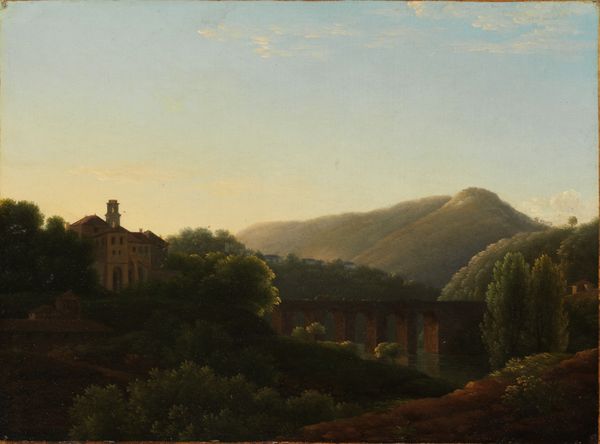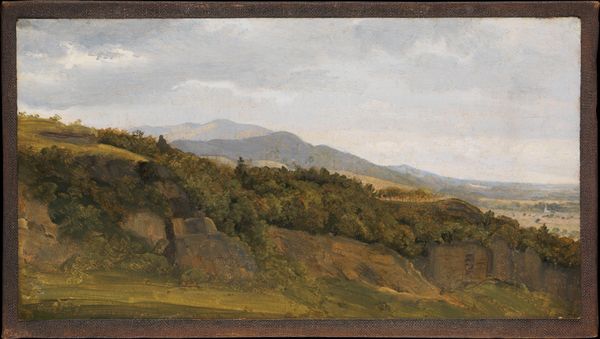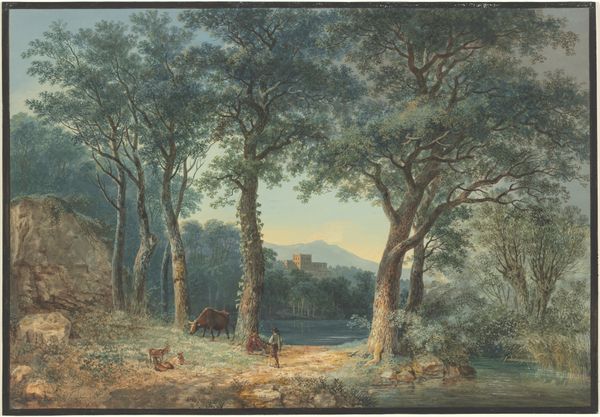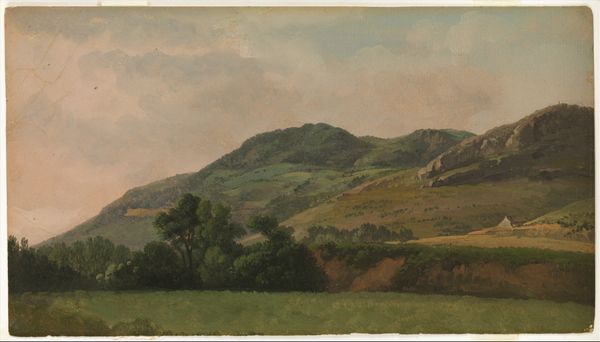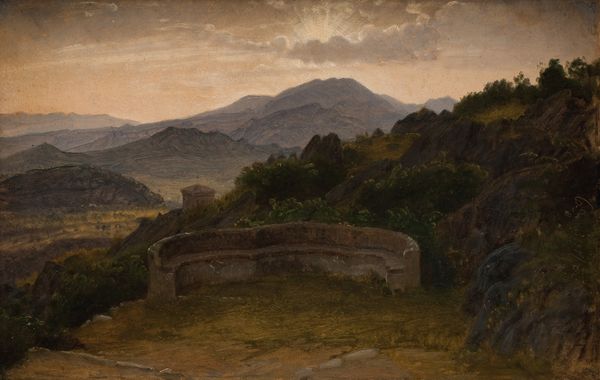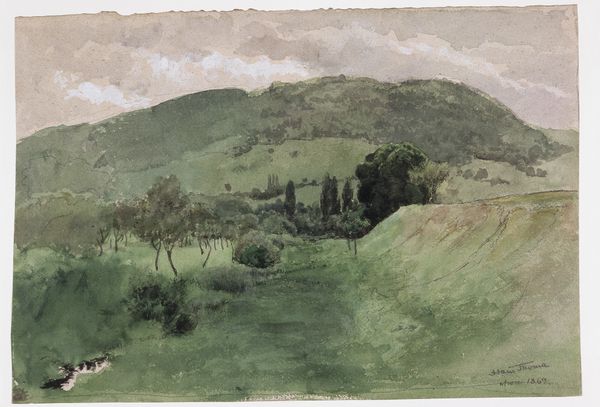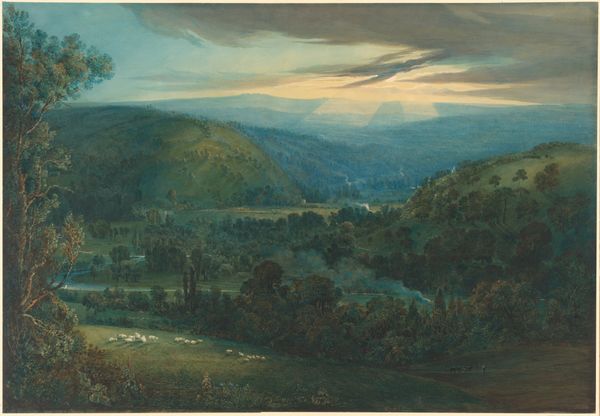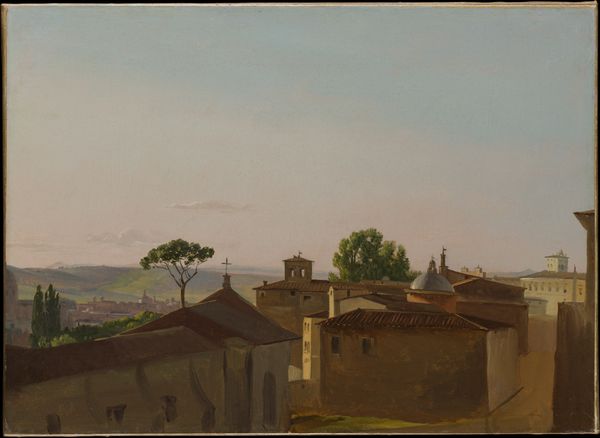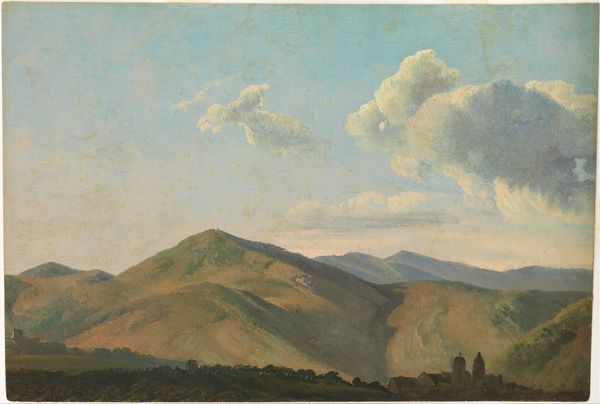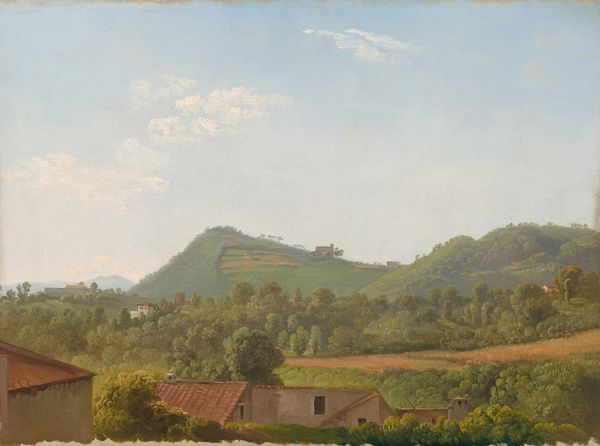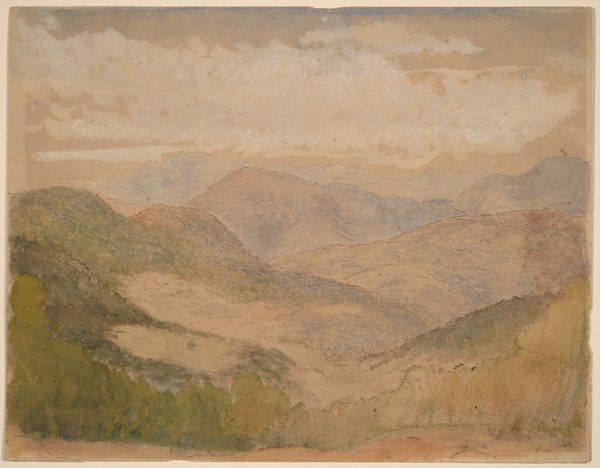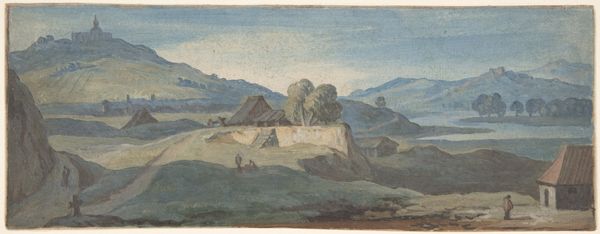
painting, watercolor
#
neoclacissism
#
painting
#
light earthy tone
#
landscape
#
form
#
watercolor
#
mountain
#
cityscape
#
watercolor
#
realism
Dimensions: 13 1/8 x 15 7/8 in. (33.3 x 40.3 cm)
Copyright: Public Domain
Curator: Looking at Simon Denis’s "Fortified Wall, Italy," created between 1786 and 1806, currently residing at the Metropolitan Museum of Art, I’m immediately struck by the soft, almost dreamlike quality of the Italian landscape he's rendered. Editor: The earthy tones really give the impression of weathered materials. You can almost feel the sunbaked stones of that wall and the dryness of the terrain. I wonder what type of pigment he employed to capture this feeling? Curator: That’s an interesting observation. Considering Denis's ties to Neoclassicism, it’s worth exploring how the choice of materials—watercolor in this case—intersects with the movement's fascination with form and its dialogue with both nature and culture. These colors could subtly critique romantic notions of the sublime. Editor: Indeed. I also notice how the watercolor medium allows for a depiction of the way light reflects on the mountains and wall, conveying depth and dimension that emphasize materiality, which invites the audience to reflect on their relationships with structures of power that affect consumption. What about his application technique? Curator: I agree. He used layering to create texture and to highlight social identity. When looking at its production in the late 18th-early 19th century, France was facing a revolution in society, and there may be connections between this moment and landscape's history in Italy and the sociopolitical dynamics of its time, too. Editor: This definitely emphasizes form! So many discussions of art ignore the physical and focus only on representation. Analyzing art history and materials creates a more engaging connection with our labor. What are your overall thoughts about his choices? Curator: Looking back, I think that situating Denis’ work within Neoclassicism can prompt considerations of cultural power, particularly concerning its influence in late 18th-century Europe, whereas previously it only prompted thoughts of its materials! Editor: For me, looking at its earthy tones reminds me how the materials tell a history and inform what social narratives or identities the image attempts to convey.
Comments
No comments
Be the first to comment and join the conversation on the ultimate creative platform.
